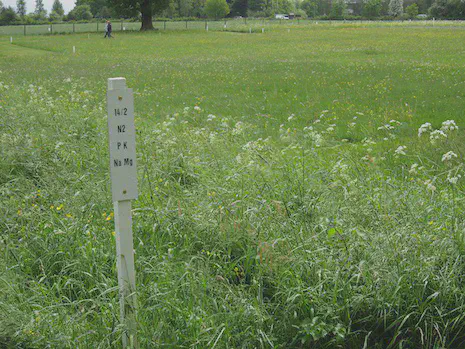Park Grass experiment video
I was browsing the Sir John Bennet Lawes timeline and discovered this excellent video with plant ecologist Jonathan Storkey introducing the Park Grass Experiment.
The Park Grass experiment at Rothamsted was started in 1856 and has been continuously monitored ever since. That makes it the oldest experiment on permanent grassland in the world.
The experiment was designed to investigate the effects of fertilizer application on hay yields. But what was quickly seen, within the first years of the experiment, was that application of the different fertilizers caused different species to grow. Lawes and Gilbert, in their first report on the experiment, remarked that:
The plots had each so distinctive a character in regard to the prevalence of different plants that the experimental ground looked almost as much as if it were devoted to trials with different seeds as with different manures [fertilizers].
C.V. Piper wrote in 1924, after a visit to Rothamsted, that the Park Grass experiment results “carry lessons of high importance in the growing of golf turf.” These lessons extend to any kind of turf, including lawns.
I wrote about this with Frank Rossi in The Park Grass Experiment and the Fight Against Dogma. The fertilizers that you apply will influence the species that grow, and the Park Grass experiment is the archetype of this effect.
